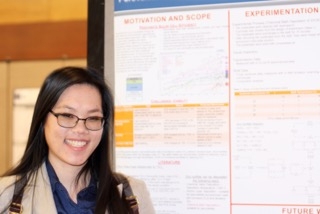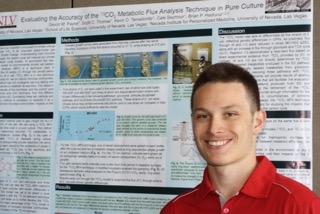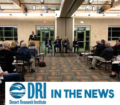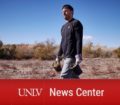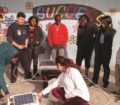Summer Research EXperience (REX) Program
Summer REX will not be held in 2018.
Please check back in the Spring of 2019.
Thank you for your interest!
OUR GOAL
Our goal is to provide southern Nevada students with the ultimate early research experience and to increase the number of STEM majors coming from Nevada schools.
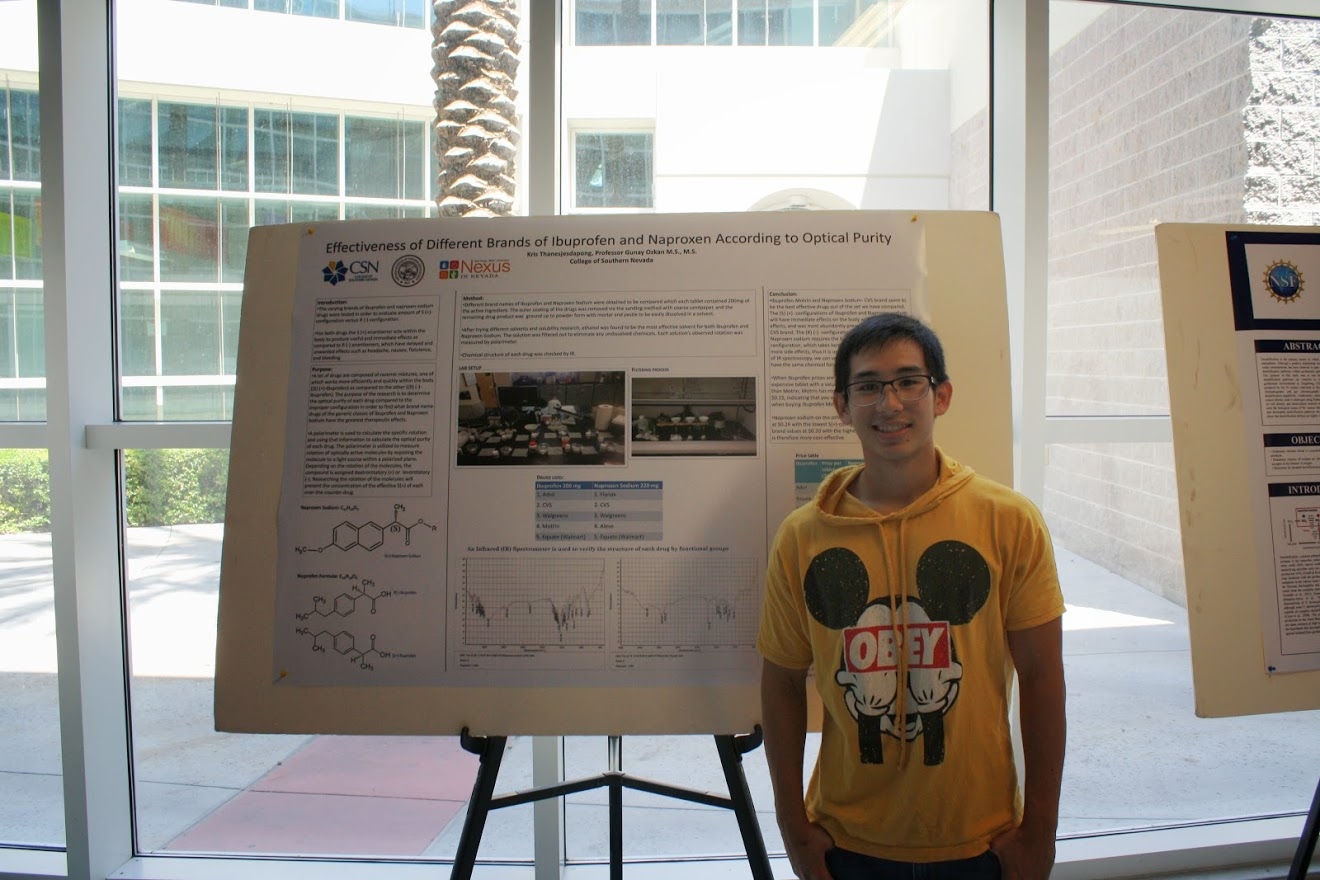
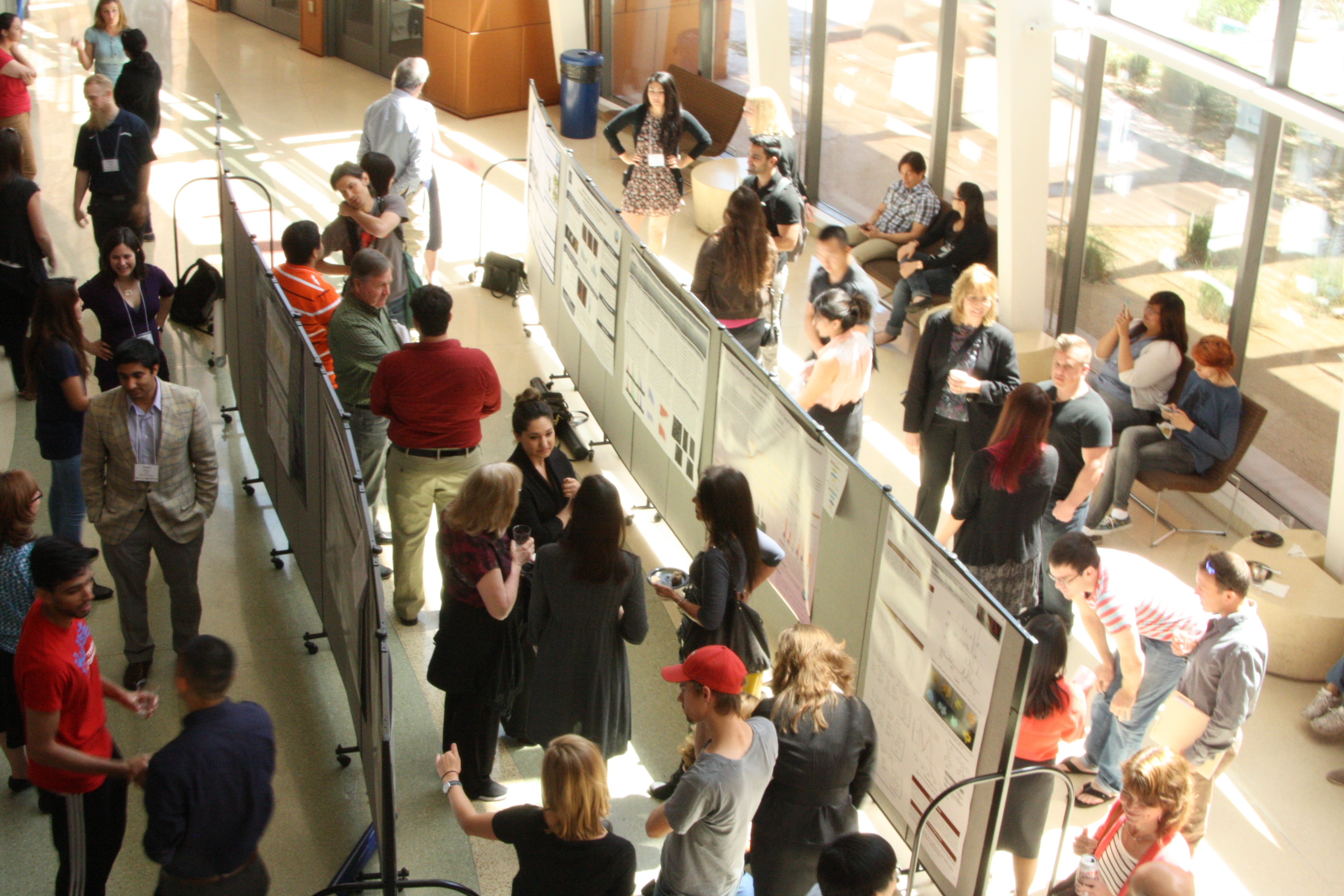
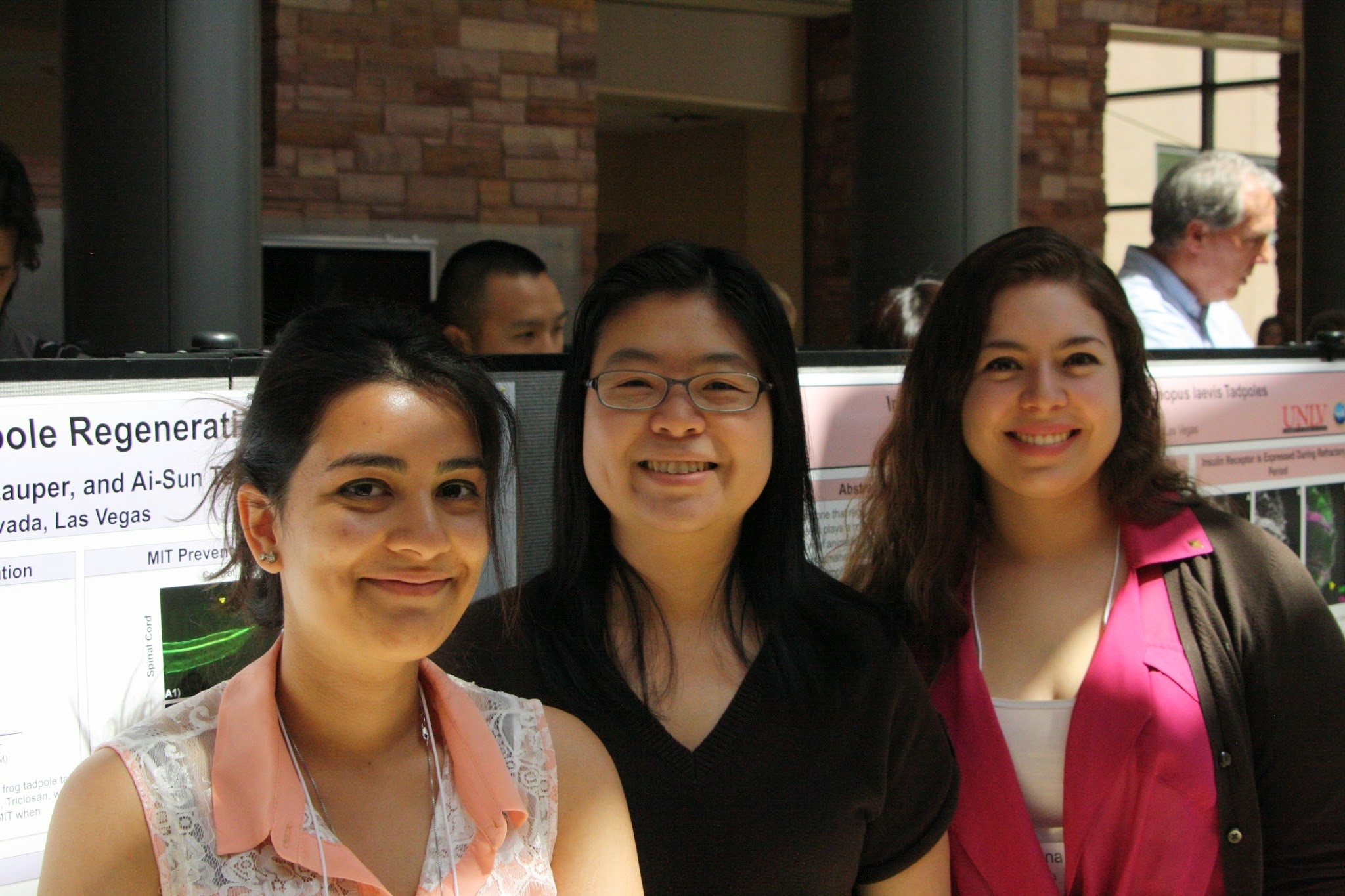
WHAT: The Summer Research EXperience is a six-week long research program offered for High School and Community College students. We aim to provide an introductory STEM (science, technology, engineering and mathematics) research experience to students who have no formal research training beyond high school courses. This program is especially useful for students who are considering enrolling as a STEM major in college or who are taking introductory college courses (first/second year) in a STEM major.
RESEARCH AREAS: Faculty in the following disciplines have openings for students:
- Anthropology (diet of hunters and gatherers in East Africa, evolution of cooperative breeding, labor and delivery around the world)
- Biochemistry (microbiology & biosafety)
- Civil Engineering (water resources/climate change)
- Computer Science (systems research and infrastructure)
- Electrical and Computer Engineering (computer vision, e.g. driver assistance systems)
- Environmental Engineering (chromium bioremediation)
- Entertainment Engineering (creating an augmented reality experience, STEAM Origami – High Roller)
- Geoscience (health aspects of naturally-occurring asbestos)
- Life Science (characterization of microorganisms in hot and cold springs, metagenomic analysis of microbial communities)
- Mechanical Engineering (solar photovoltaics, materials for water treatment, materials for solar thermal energy)
- Sociology (medical/reproductive sociology)
Note: Students may indicate a preference for a particular research area in their application (statement of interest), but there are no guarantees that you will be placed with a faculty member in that discipline.
WHO: Any high school or community college students who meet the following criteria:
- Students are recommended to have a GPA of 3.0 or above (unweighted)
- Students must have their own means of transportation (e.g. personal car, public transportation, reliable pick-up/drop-off assistance)
- Students must be at least 18 years old.
If accepted, students are expected to:
- Work 30 hours each week on research. Any time off must be approved by the REX Coordinator and your supervising faculty member.
- Attend weekly workshops and trainings. For the most part, these will take place during your regular 30 work hours.
- Complete your poster and report by the end of the program. This may require time outside of your regular work hours.
WHY: The Summer REX program allows students the opportunity to gain research experience that is especially useful for any STEM field and many other benefits such as:
- A rewarding experience: This is a great program for all students interested in STEM careers and it will increase your chances of getting accepted to future research programs.
- Stipend: $1200
- Program Activities: Students will gain experience working in a research laboratory and increase their research skills through workshops on scientific writing, ethics, lab safety, and making scientific posters.
- Networking: Students will meet like-minded individuals that are on the same career path and will be mentored by university faculty and graduate students.
- Higher Education: Programs such as this one may increase your chances at receiving STEM scholarships.
WHERE: The program will be at the University of Nevada, Las Vegas main campus. (4505 S Maryland Pkwy, Las Vegas, NV 89154) Transportation is the responsibility of the student.
If you have any further questions, please contact the REX coordinator via email at erica.marti@unlv.edu or phone (702) 895-2693, or refer to the FAQs.
Project Descriptions
This project will involve data analysis for several topics. 1) Use statistics and analytical methods to investigate the diet of hunters and gatherers in East Africa. How does it compare to modern diets? (e.g. types of food that are eaten) How does the microbiology of hunter and gatherer gut compare to someone who eats a modern diet? 2) Study the evolution of cooperative breeding. How do different societies (i.e. large-scale, small-scale) deal with caring for children? How has child care changed over time? What allowed our ancient ancestors to be successful in rearing children in difficult conditions? 3) Examine labor and delivery (i.e. child birth) around the world.
This project involves microbiology and biosafety through research on Bacillus spore germination. Bacillus anthracis are bacteria that result in anthrax, which is a serious and potentially deadly infection and has been used as a bioterrorism weapon. The bacteria causing anthrax produce spores that are highly resistant to treatments. Research in this lab looks at how to control the bacteria by preventing the spores from forming. Note: research uses non-virulent (i.e. non-dangerous) Bacillus bacteria.
The project focuses on water resources and climate change, especially in relation to the desert southwest and the Colorado River. There are several possible research questions to investigate: 1) How does climate change impact water supplies in a large river basin (e.g., the Colorado River basin? 2) How can metropolitan areas (e.g., Las Vegas) manage water resources in response to population growth and climate change? 3) How can urban areas manage stormwater to reduce flooding and improve water quality in the receiving water bodies? 4) How much energy is needed to produce, treat, and deliver water in different areas? As part of this project, you will learn how to manage and analyze time series (e.g., temperature, rainfall, stream flow) and spatial (e.g., land use) data.
This project involves systems research and infrastructure, which includes operating systems, computer architecture, file systems and storage backend, network infrastructure, and cloud infrastructure. As part of the research project, you will be exposed to setting up research system platforms and measurements.
This project involves research in advanced computer vision and deep learning for improved understanding of images and videos. You will help develop new algorithms (i.e. a set of step-by-step operations). The desired algorithms will help computers recognize objects in images including 1) picking out recreational boats from maritime images, 2) recognizing different types of food in Yelp images, and 3) interpreting vehicular traffic. Other project work might involve working on applications for self-driving cars, driver assistance systems, health, and monitoring.
Cleaning up environmental pollution, such as contaminated groundwater, is one area of environmental engineering. The cleaning process, or remediation, is often complex and requires understanding chemistry, microbiology and engineering. One method of treating water, biological treatment, uses microorganisms to degrade or modify contaminants into less toxic materials. Microorganisms may be naturally present, they can be added to the contaminated groundwater, or the existing ones can be acclimated to break down the contaminants. Also, microorganisms need additional nutrients, food sources, etc., to thrive. This project investigates food sources, uses laboratory simulations, and aims to biologically modify and remove chromium contamination from groundwater.
Two students will be selected for these projects. (1) Augmented Reality – a project about the city of Las Vegas that aims to construct the augmented reality experience of Las Vegas. You will develop a database of Las Vegas and build an augmented reality application that will run on mobile phones. Specific tasks may include surveying the metadata of Las Vegas (e.g., number of hotels, cultural and historical facts of the hotels, technologies being used in their live shows, etc.), constructing a database of the metadata, and building an app that superimpose the metadata over mobile devices. (2) STEAM Robotics – a project about robotics and STEAM (Science, Technology, Engineering, Arts, and Math). The goal of the project is to identify STEM components that are associated with biped robots (aka humanoid) and aerial robots (aka drones). This project will deal with a small size biped robot and a quadcopter drone as a hands-on experience. Specific tasks may include building a biped robot and/or a drone kit, identifying and listing STEM components associated with them, and drafting a STEAM curriculum with robots.
These projects will involve research on bacteria and other microorganisms that live in harsh conditions. 1) Explore the world of extremophiles! Discover and characterize new thermophilic (heat-loving) microorganisms in hot springs. How do they differ genetically and physically from other microorganisms? 2) Learn about bioinformatics and bacteria that degrade industrial waste. Bioinformatics uses mathematics and computer science to understand large biological datasets, such as genetic information. Hazardous waste materials are dangerous to humans and other living creatures, but some bacteria can safely transform the waste to non-hazardous products. How are these bacteria genetically different from other microorganisms? 3) There are many different microorganisms in cold springs in the Great Basin region, which includes Nevada. How do bacteria in Nevada compare to those found in cold spring around the world?
Naturally occurring asbestos is present in rocks and soils in southern Nevada, including the Las Vegas metropolitan area. In this research project, you will help analyze rock and soil samples in the laboratory to determine if asbestos minerals are present, measure the chemistry of the minerals present in order to identify their mineralogy, and measure the size and shape of the fibers because this strongly affects their toxicity. Students will also work with large Excel databases. This information will be used to better understand the potential for human exposure to asbestos in this region.
This project involves solar energy research in the areas of photovoltaics and concentrated thermal. You will learn how to do performance testing and analysis of photovoltaic (PV) systems. You will also learn how to set up and maintain meteorological equipment, solar irradiance measurement devices (to determine the energy coming from the sun), voltage/current measurement devices, and data logging equipment. Topics for analysis may include: 1) Comparing different PV technologies (e.g. panels with two faces or a single face) to see how much sunlight is converted to electricity, 2) comparing the reliability of different PV technologies, and/or 3) determining the value ($) of generated energy from different PV technologies.
Two students will be selected for these projects involving the creation of new materials. (1) The solar energy project seeks to develop specialized inorganic-oxide materials for high-temperature solar absorber coatings on solar receivers. In concentrated solar power, reflectors direct sunlight to a solar receiver, which gets extremely hot (450 °C). The solar absorber coating on the receiver must withstand the high temperature and not lose heat quickly in order to increase efficiency for the solar plant. In this project, you will develop expertise with instrumentation and practice in a chemical laboratory, as well as material analyses methods with scanning electron microscopy (SEM), x-ray diffraction (XRD), and optical characterization measurements. (2) The water treatment project investigates methods to develop advanced materials for water and wastewater treatment. The new materials will be used to remove contaminants from the water through adsorption or chemical destruction. In this project you will help synthesize the materials and examine their efficiency for contaminant removal.You will develop expertise in working with chemicals in materials laboratory, in performing water treatment experiments, and in using specialized instrumentation (SEM, XRD).
This medical sociology project examines the availability of practitioners and other care-related options to pregnant and childbearing women in the Las Vegas Valley.
Frequently Asked Questions (FAQ)
There are no medical practitioners involved in the program. The National Science Foundation does not fund clinical medicine research; however, many areas of biological and chemical research have direct applications to the medical field, such as research on preventing bacterial diseases, inhibiting anthrax spores, developing drugs for cancer therapy, combating HIV, understanding genes that affect obesity, and understanding cancer cell division.
No. Because there are many group activities and a concluding poster session, all participants must stick to the scheduled program.
No, students will only receive the stipend. Students are responsible for arranging their own transportation to and from UNLV. No meals will be provided. The program will cover costs related to research supplies and poster printing.
Although we strongly encourage students to have a 3.0 unweighted GPA when applying, it is possible to participate in our Summer REX program with a GPA lower than 3.0 if you submit a strong application. If you currently have a GPA lower than the recommended, you may include the following with your application:
An explanation for your <3.0 GPA in your 150 – 500 word statement
Additional letters of recommendation
When calculating the word count of your response, we count each individual word, including “a”, “is”, etc. Hyphenated words count as one-word. You can use the word count tool that is included in your word processing program to verify the number of words in your statement. The video link below further explains how to use the word count feature in MS Word. To get the word count for a paragraph or sentence, highlight the part you are interested in and follow the same directions as the video.
CSN Students: All CSN students can request an unofficial transcript using the instructions in the link below.
https://www.csn.edu/transcript-information
CCSD Students: To request an unofficial transcript from your high school, you may visit your school’s registrar office for a printed copy.
You may also request a transcript through CCSD (https://transcripts.ccsd.net/). As a CCSD student, you may request a single copy of your transcript free of charge each calendar year through the CCSD website.

